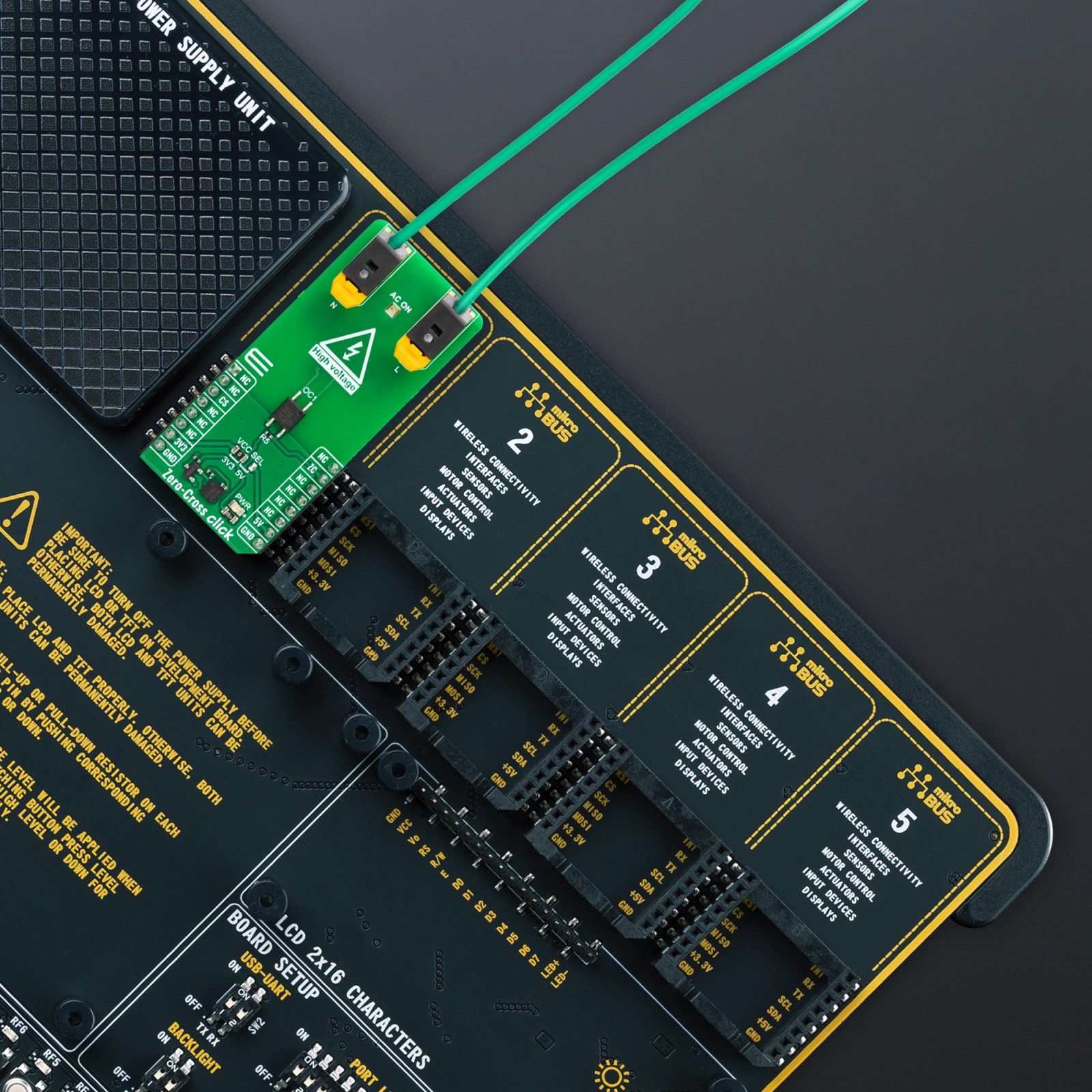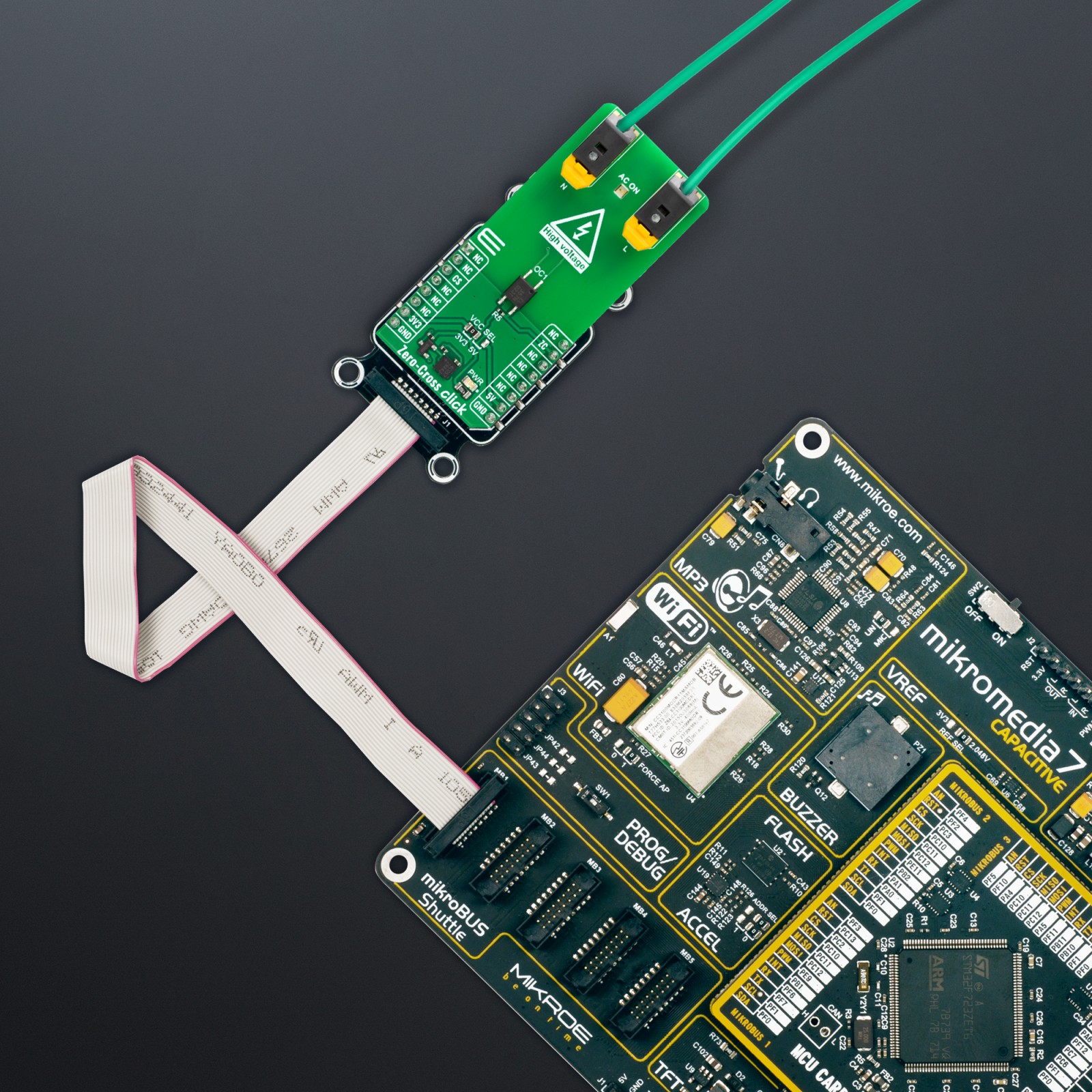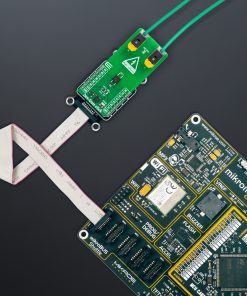Zero-Cross Click
R405.00 ex. VAT
Zero-Cross Click is a compact add-on board that has the ability to detect the change from positive to negative or negative to a positive level of a sinusoidal waveform. This board features circuitry that provides Zero Crossing Detection (ZCD). Whenever the sine wave crosses the ground potential, the output shifts from HIGH logic to LOW or vice-versa. The waveform depends on the frequency, but the output is a pulse wave, so a Zero-Crossing detection circuit is also called a pulse wave generator circuit. This Click board™ makes the perfect solution for the development of frequency counters, phase meters, time maker generators, and more.
Zero-Cross Click is fully compatible with the mikroBUS™ socket and can be used on any host system supporting the mikroBUS™ standard. It comes with the mikroSDK open-source libraries, offering unparalleled flexibility for evaluation and customization. What sets this Click board™ apart is the groundbreaking ClickID feature, enabling your host system to seamlessly and automatically detect and identify this add-on board.
Stock: Lead-time applicable.
| 5+ | R384.75 |
| 10+ | R364.50 |
| 15+ | R344.25 |
| 20+ | R331.29 |

















.jpg)








